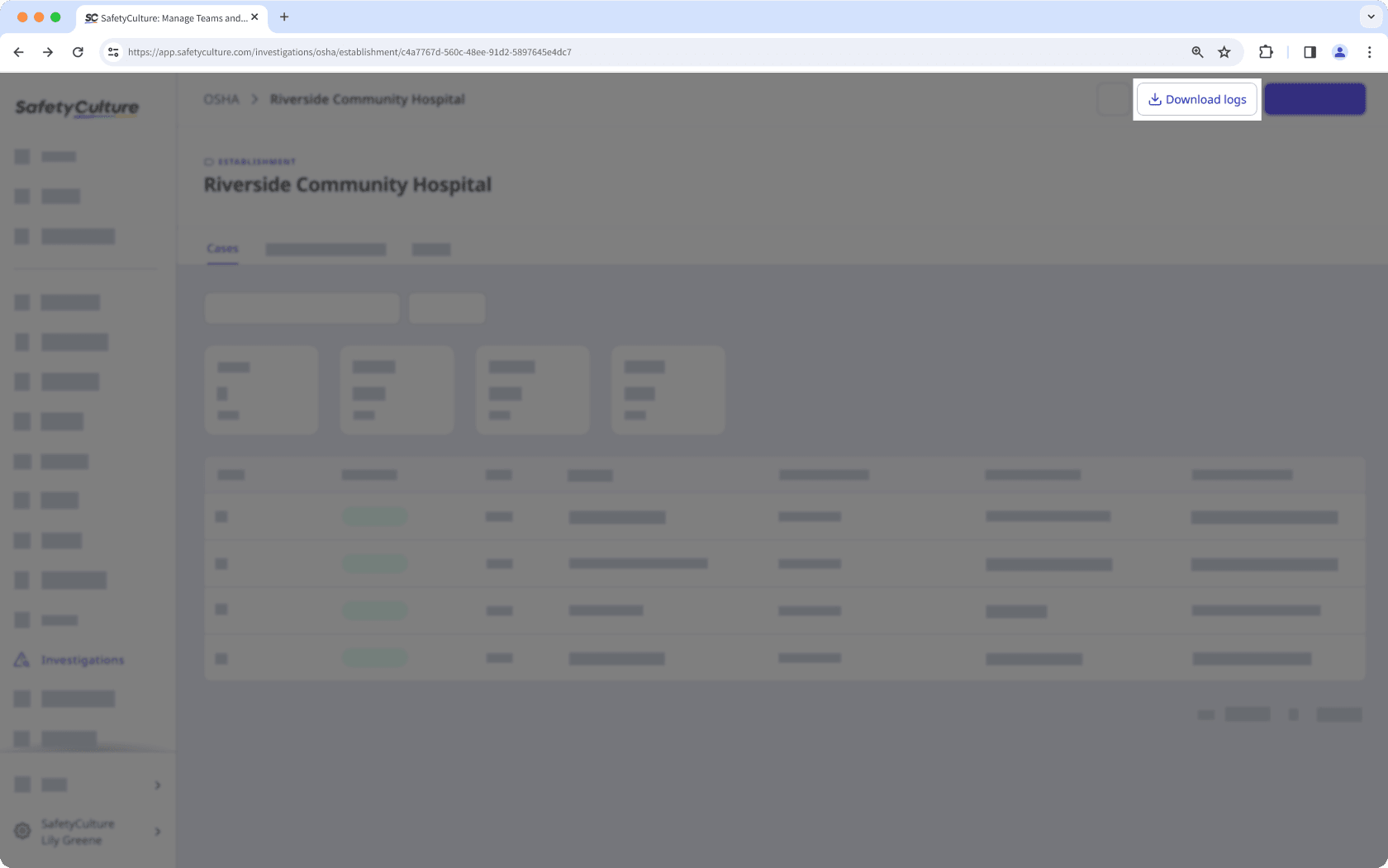- Using SafetyCulture
- Investigations
- What is OSHA reporting?
What is OSHA reporting?
Learn more about OSHA reporting and how to manage workplace incidents and injuries using the required OSHA forms.What is OSHA reporting?
OSHA reporting is crucial for ensuring workplace safety by recording and submitting work-related injuries, illnesses, and fatalities to the U.S. Occupational Safety and Health Administration (OSHA). Data must be submitted electronically through the Injury Tracking Application (ITA) using Forms 300A, 300, and 301. Only establishments that meet specific size and industry criteria are required to report.
With OSHA reporting built into the Investigations feature in SafetyCulture, your organization can streamline how it captures and manages workplace incidents. Easily record reportable incidents by establishment, complete the required OSHA forms for each case, and download logs ready for ITA submission, ensuring your organization stays compliant.
What OSHA reporting forms are available?
Form 300A
OSHA Form 300A is an annual summary of work-related injuries and illnesses reported across an organization. It provides an overview of the total number of incidents, days away from work, and the types of injuries or illnesses that occurred in the workplace within a given year.
Form 300
OSHA Form 300 is a detailed log used to track each work-related injury and illness within a given year. It includes critical details for each incident, such as the date and time, the nature or type of the injury or illness, the location, and a description of the incident. This form also captures the incident outcome, including whether the incident resulted in death, days away from work, restricted work activity, or medical treatment.
Form 301
OSHA Form 301 is an incident report that captures detailed information about each work-related injury or illness. It includes the employee’s personal information, how the incident occurred, and the type of medical treatment provided. This form is typically used together with Form 300 to give a comprehensive view of each incident.
OSHA reporting in SafetyCulture
Create and manage establishments
An establishment is a single physical location where businesses conduct operations. In SafetyCulture, you can set up and manage your establishments to get started with OSHA reporting. From a centralized dashboard, you can track total reported incident cases by establishment and monitor key safety metrics such as TRIR, DART, and LTIR that provide valuable insights into your organization's safety performance.
You can also view a dedicated profile for each establishment, where you can access all relevant details, create and track individual cases, and review data on total hours worked and the average number of employees for each filing year, which are used to calculate safety metrics.

Monitor and assess your organization's safety performance with the following key safety metrics:
Total Recordable Incident Rate (TRIR): Measures recordable incidents per 100 employees in a year. It’s calculated as: (Total recordable incidents × 200,000) / Total hours worked.
Days Away, Restricted, or Transferred (DART): Measures injuries or illnesses that result in days away from work, restricted duties, or job transfers per 100 employees in a year. It’s calculated as: (DART incidents × 200,000) / Total hours worked.
Lost Time Injury Rate (LTIR): Measures injuries or illnesses that result in time away from work per 100 employees in a year. It’s calculated as: (Lost time incidents × 200,000) / Total hours worked.
Record cases of workplace incidents
Record cases of work-related injuries and illnesses for each establishment as they occur. Capture key incident details and employee information needed to track OSHA Forms 300 and 301 for accurate and compliant reporting.
If you have "OSHA: Access" permission, you can record workplace incidents for OSHA reporting in your organization.
Download OSHA logs
Easily generate and download completed OSHA Forms 300A, 300, and 301 as CSV and PDF files for your organization’s establishments. Use these files to meet OSHA’s electronic submission requirements via the Injury Tracking Application (ITA), post physical report summaries in the workplace, and maintain accurate records for compliance and audits.

Was this page helpful?
Thank you for letting us know.